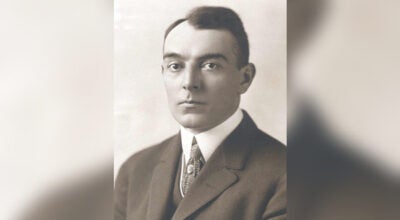Barham revisits teaching at SMC
Published 10:23 am Wednesday, February 8, 2017
Phil Barham held court into the evening Feb. 3 at Southwestern Michigan College after promising 20 area students to “take as many questions as you throw at me.”
Barham, a Tennessee Technological University saxophone professor who taught at SMC 10 years, alternated between virtuosity and dynamic control and expounded on his “tough love” teaching style.
“Warm up playing as softly as possible. Crescendo and decrescendo,” Barham said, who grew up in the tuning strobe era phone apps replaced.
“Stretch your limits dynamically as much as you can,” he urged. “Playing with a great sound and in tune are the two most important things. Everything else falls in line.”
Even before his 2 1/2-hour clinic on the stage he shared with University of Michigan mentor Donald Sinta at the 1998 Dogwood Fine Arts Festival, Barham squeezed in a private lesson with SMC saxophonist Glenn McFarland.
Barham soloed Feb. 4 with SMC’s Brass Band and Andrews University’s Wind Symphony at Howard Performing Arts Center in Berrien Springs.
Barham recalled Sinta “leaping like a kangaroo from his seat and shrieking at me about playing out of tune. His expectations were off the charts. He barked way worse than me.”
Barham punctuates the memory with a flurry of notes from Paul Creston’s Concerto on the Selmer clinician’s gold-plated $17,000 horn.
Sinta made Barham play the piece at 3,500-seat Hill Auditorium — the largest performance venue on the Ann Arbor campus — while he sat in back, beneath the balcony
“No, it’s not short enough. Play it again!” Sinta bellowed “for an hour and 20 minutes,” Barham recalled. “It digressed to where he didn’t speak. I’d look at him and play it again because I knew what he was going to say. In that lesson I learned how to play staccato. Today they’d probably fire him, but lots of people are too tender.
“My students are not tender. They can take anything because the world is tough and cruel and you need to be able to handle it. After four years of me, no one can say anything they haven’t heard. My kids play jazz and classical and I encourage them to double on clarinet and flute. If you go into music these days, you better be resilient.”
“In high school, I had technique to burn,” he said, “but was undisciplined. I didn’t have to work hard to move my fingers fast. But as a teacher, students came to me who couldn’t. I may seem mean, but I care about you. It’s tough love. Trying to sugarcoat everything does a disservice to you.”
He improves players’ speed with “crash-and-burn” exercises, reeling off scales to a metronome set at 140 beats per minute.
Barham was reunited with his first director, Richard Bressler, who introduced him to clarinet at Lincoln Elementary School and developed his playing at Central Junior High.
By 10th grade at Dowagiac Union High, Barham knew he wanted to turn professional — particularly after hearing bands Maynard Ferguson and Bill Chase led.
Barham, 59, who studied privately with Sister Lakes’ Joseph Burm, left southwest Michigan for the University of North Texas’s jazz program, from which he earned his bachelor’s degree in 1982. His U-M master’s degree followed in 1983.
The New York Times mentioned Barham’s ability to “blister through a swift rippling melody” after his 1987 Carnegie Hall debut.
He debuted in London in 1990 during a European tour that included Oslo, Norway, and Geneva, Switzerland. He played Tokyo in 1993.
Barham, during 14 years at Tennessee Tech, brings saxophone quartets to Fischoff chamber music competitions at the University of Notre Dame.
“When I came there were five majors,” he said. “After three years, [there were] 25. Then we cut back because I can’t teach that many.”
Barham, who practices in his office from 6:30 to 8 a.m., said his sound hinges on “the mouthpiece first, the reed second, the ligature third and the neck,” which he augments at the “point of resonance” with Meridian Winds’ ergonomic heavy mass screws.
“Turning into a great player takes time. It’s not an overnight process,” Barham said, whose reed preference was influenced by Jeff Coffin, a three-time Grammy winner with the Dave Matthews Band.
He “waterlogs” Vandoren reeds in a jar and recommended Legere synthetics to a bass clarinetist.
He demonstrated a mute which fits in the bell and how to play vibrato, double tongue and slap tongue.
“Scott Mayo, a friend from U of M, plays on ‘Dancing with the Stars,’” Barham said. Tim Ries toured with the Rolling Stones in 2003-2004.
Gary Foster was Instrumental in Barham trying the golden sax.
Foster, 80, who played woodwinds on 500 movie scores and in 200 television orchestras, worked with Bob Dylan, Barbra Streisand Frank Sinatra and “Star Wars” composer John Williams.





